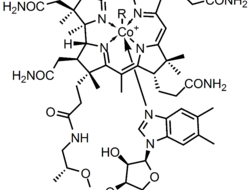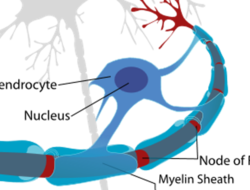Vitamin B12: Cobalamin
Published: October 29, 2021
Vitamin B12 is a water soluble vitamin.
Water soluble vitamins are absorbed directly into your blood from your gastrointestinal tract and travel and circulate freely in the water filled parts of your body.
Vitamin B12 is the generic name applied to a group of compounds called corrinoids with similar chemical structures.
Vitamin B12 contains cobalt, an ultra trace mineral, and an alternative name for vitamin B12 is cobalamin.
This is reflected in the names of the associated compounds:
- cyanocobalamin
- hydroxocobalamin
- aquocobalamin
- nitrocobalamin
- 5"-deoxyadenosylcobalamin
- methylcobalamin.
Although only two B12 vitamins, 5'-deoxyadenosylcobalamin and methylcobalamin, are active as coenzymes in your body, your body has the ability to convert other cobalamins into the active coenzyme form of vitamin B12.
A coenzyme is a complex organic molecule which facilitates the activity of an enzyme.
As a coenzyme vitamin B12 facilitates enzymes involved in the synthesis of new cells, the maintenance of nerve cells, and the catabolism (break down) of some fatty acids and amino acids.
With folate vitamin B12 is involved in the regeneration of the amino acid methionine and the synthesis of DNA and RNA: the genetic material that is necessary for protein synthesis in your body.
On its own, vitamin B12 promotes the normal growth of nerve fibres and facilitates the maintenance of the protective sheath that surrounds nerve fibres.
In addition, vitamin B12 is required for bone cell activity and metabolism.
Vitamin B12 deficiency
Vitamin B12 deficiency occurs in stages and deficiency is initially identified by diminished serum concentrations.
Cell concentrations then diminish followed by biochemical deficiency which decreases DNA synthesis and elevates homocysteine ...Link to the full article to learn more.
References
1.
Gropper, S.S., Smith, J.L. & Groff, J.L. (2005). Advanced Nutrition and Human Metabolism (4thEd.). Belmont, CA: Thomson Wadsworth.
2.
Whitney, E. & Rady Rolfes, S. (2005). Understanding Nutrition. Belmont, CA: Thomson Wadsworth


